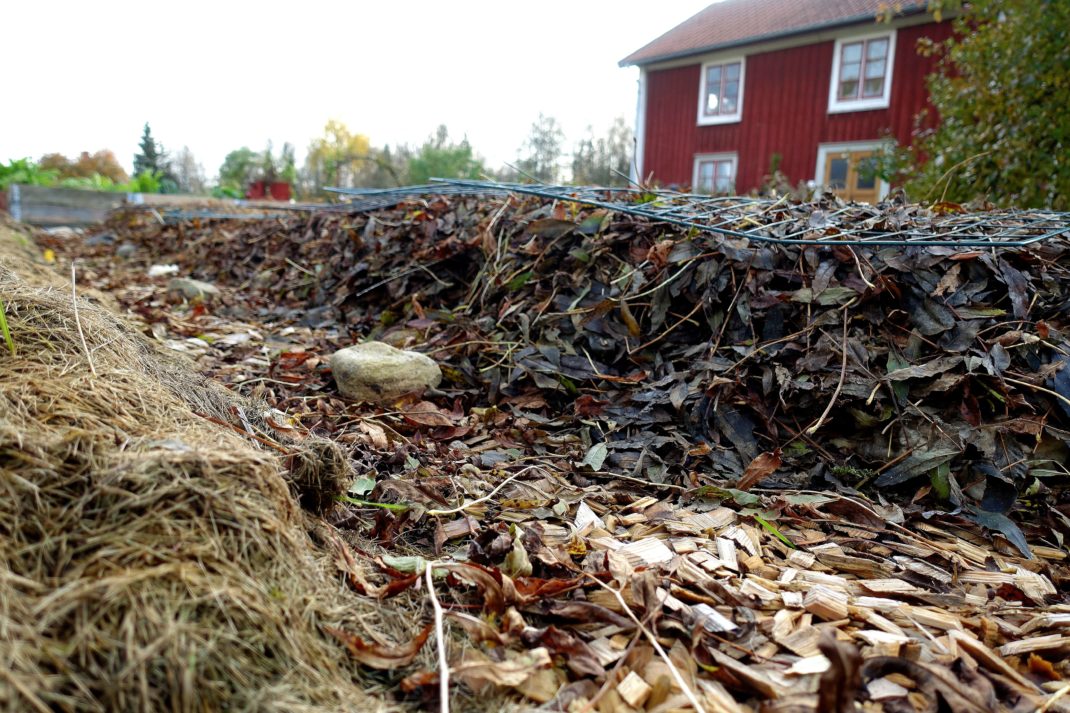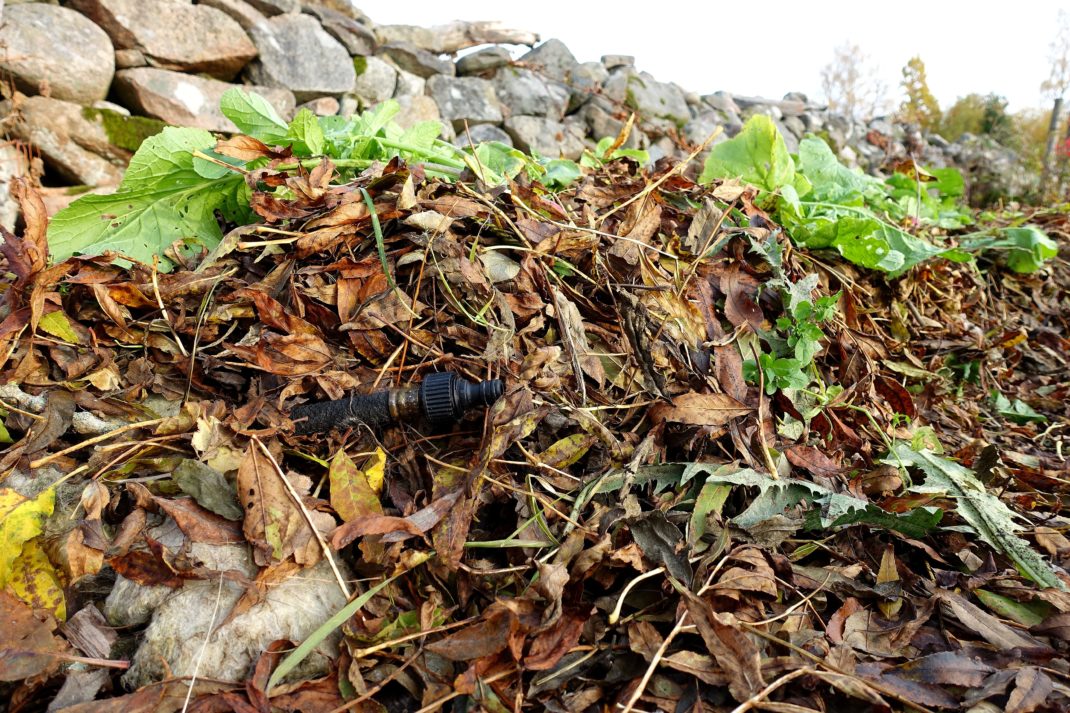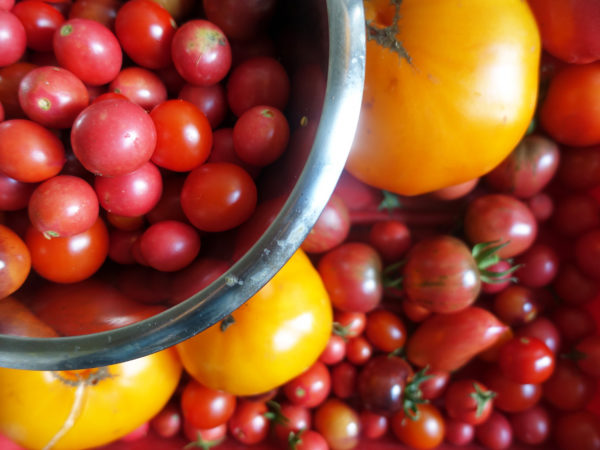How much mulch do I need?
It's time to cover my garden with mulch. But the question is: How much mulch should I use?

How much mulch should you use? Well, it depends. Leaves are great as a top layer of mulch.
One of the most common questions I get here on the blog is about mulch. Specifically, regarding how much material you should put on your beds. Many beginners wonder how much mulch is just enough, and worry about getting it wrong. I wanted to share my thoughts about that subject here today!
Read more: Soil analysis part 2 – Mulching works
Mulching – what is it?
Mulching simply means covering the soil with plant parts like leaves, silage or grass clippings. The microbes and earthworms in the beds turn the material into new, nutrient-rich soil. Also, you get fewer weeds and you don't need to dig or turn the soil either. The earthworms take care of that!
Fall is a great time to work on your mulched beds. Or, to start a new mulching project too for that matter. Gather enough material to start big or start small. I'm going to write down some of my favorite tips on mulching later!
If you, on the other hand, are a seasoned gardener with plenty of mulching experience, then you might want to use this time of the year to feed your mulched beds. This is a great way to prepare your beds for winter. After all, there's plenty of material around that you can use during fall.
Thick layers
I prefer using thick layers of mulch on my beds. The more I add, the more humus and nutrients I get. The mulch also helps insulate the soil which means that the earthworms can stay busy until late fall and winter. Some parts of my kitchen garden are frozen. But there's still plenty of activity underneath the thick layers of mulch in the beds nearby.
What do I mean by a thick layer of much then? Well, I think that around 4-8 inches are a good rule of thumb, or slightly less if you covered the bed relatively recently. Just remember that the layer of mulch will shrink during the winter months. It won't be nearly as fluffy as in the beginning.

There is a layer of grass clippings and half-decomposed plant parts underneath the wool. I'm going to add more leaves on top.
Three tips
- Use the ugliest material as a first layer, for example, old plant parts or larger twigs and thick stalks. Add grass clippings, leaves, straw or something similar on top, so that you can't see the mess underneath.
- Put a wire mesh panel on top. This will help keep the material in place.
- If you worry about slugs, then you can simply let the mulch freeze and then turn it over, or lift it to the side for a day or two. Doing this will make any eggs freeze too.
I decided to prioritize a few particular things this fall. First and foremost, I wanted to cover next year's cabbage patch carefully. For example with wool, grass clippings, old plant parts and then leaves on top. But I do leave some of the beds bare. Instead, I fertilize them with bokashi or buried grass clippings. This is for my winter sowings.
Read more about mulch: Mulching my polytunnels
Less mulch
You don't need to add a thick layer of mulch to succeed though. I know that some people swear by just putting a very thin layer of for example grass clippings on top. This can, in fact, make a huge difference to dampen the soil. This layer will also provide the soil with some well-needed nutrients. Some people think it's easier to use a thin layer if your garden is crawling with slugs. I have plenty of them, but I still prefer a thicker layer of mulch. Mainly because I think that a thin layer just isn't enough to smother the weeds. I absolutely hate removing weeds, so I want to do as little of it as possible.
If you don't have enough material for your entire garden, then I think you should try to keep to a smaller area and cover it thoroughly.
Learn more about mulch: How to mulch raised beds

The black drop hose stays under the layer of mulch all winter.
So, how much mulch should you use? My advice is to just go all in. If you want to move some of the mulch to other spots, it's a really easy project during spring.
/Sara Bäckmo



Leave a Reply
You must be logged in to post a comment.